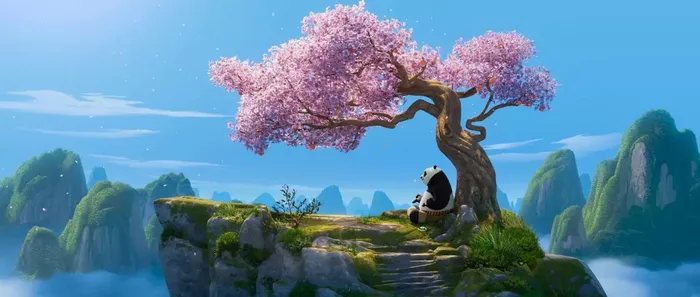“Kung Fu Panda 3” was anticipated by many fans of the franchise as the continuation of the beloved story of Po, the clumsy yet determined panda who becomes a kung fu master. However, upon its release, the film received mixed reviews, with some viewers expressing disappointment in its execution compared to its predecessors. In this article, we delve into the reasons why “Kung Fu Panda 3” fell short of expectations, analyzing its shortcomings in storytelling, character development, and overall impact.
The Legacy of Kung Fu Panda
The Success of the Franchise
Before delving into the criticisms of “Kung Fu Panda 3,” it’s essential to acknowledge the success of the franchise as a whole. The original “Kung Fu Panda” film, released in 2008, was a critical and commercial success, praised for its animation, humor, and heartfelt story. Its sequel, “Kung Fu Panda 2,” continued the story with even greater depth and emotional resonance, solidifying the franchise’s reputation as a beloved animated series.
Expectations for the Third Installment
Given the success of the first two films, expectations were high for “Kung Fu Panda 3.” Fans anticipated another thrilling adventure with Po and his friends, filled with humor, action, and heartfelt moments. However, when the film premiered, many viewers were left feeling underwhelmed by its execution, leading to criticisms of various aspects of the movie.
Narrative Shortcomings
Weak Plot Structure
One of the primary criticisms leveled against “Kung Fu Panda 3” is its weak plot structure. Unlike its predecessors, which featured compelling storylines with clear objectives and stakes, the third installment struggles to maintain a cohesive narrative. The plot feels disjointed at times, with subplots that lack depth and fail to engage the audience.
Lack of Emotional Depth
Another issue with “Kung Fu Panda 3” is its lack of emotional depth compared to previous films in the franchise. While the first two movies tackled themes of identity, self-discovery, and redemption, the third installment fails to explore these themes in a meaningful way. As a result, the emotional impact of the film is diminished, leaving viewers feeling disconnected from the characters and their struggles.
Character Development
Stagnant Character Arcs
In addition to its narrative shortcomings, “Kung Fu Panda 3” also fails to deliver meaningful character development for its protagonists. Po, in particular, experiences little growth or evolution throughout the film, despite being presented with new challenges and obstacles. Instead of showing growth and maturity, Po’s character arc feels stagnant, resulting in a lackluster portrayal of the beloved panda hero.
Underutilized Supporting Cast
Another issue with “Kung Fu Panda 3” is the underutilization of its supporting cast of characters. While the previous films provided ample screen time for characters like Tigress, Monkey, and Crane to shine, the third installment sidelines them in favor of focusing on Po’s journey. As a result, these characters feel underdeveloped and lacking in agency, detracting from the overall enjoyment of the film.
Visual and Technical Aspects
Inconsistent Animation Quality
While “Kung Fu Panda 3” boasts impressive animation and visual effects, some viewers have criticized the film for its inconsistent quality. At times, the animation appears fluid and dynamic, bringing the action sequences to life in stunning detail. However, in other scenes, the animation feels choppy or rushed, detracting from the overall viewing experience.
Lackluster Action Sequences
Another area where “Kung Fu Panda 3” falls short is in its action sequences. While the previous films featured thrilling martial arts battles that showcased the skills of the characters, the third installment fails to deliver the same level of excitement and intensity. The fight scenes feel uninspired and lack the creativity and choreography that made the earlier films so memorable.
Audience Reception and Criticisms
Fan Disappointment
Upon its release, “Kung Fu Panda 3” received mixed reviews from both critics and audiences alike. While some viewers praised the film for its humor and animation, others expressed disappointment in its lackluster storytelling and character development. Many fans felt that the third installment failed to live up to the high standards set by its predecessors, leaving them feeling let down by the overall quality of the film.
Critical Analysis
Critics also had mixed reactions to “Kung Fu Panda 3,” with some praising its visuals and humor, while others criticized its narrative shortcomings and lack of emotional depth. Many reviewers noted that the film felt like a step backward for the franchise, failing to build upon the strengths of the previous films and instead retreading familiar ground. Overall, “Kung Fu Panda 3” received lower scores than its predecessors, reflecting the widespread disappointment among both critics and audiences.
Conclusion
“Kung Fu Panda 3” may have fallen short of expectations for many fans of the franchise, but it remains an important chapter in the story of Po and his friends. While the film boasts impressive animation and humor, its weak plot structure, lack of character development, and inconsistent quality detract from the overall viewing experience. As the final installment in the “Kung Fu Panda” trilogy, “Kung Fu Panda 3” serves as a reminder that even beloved franchises can stumble, but it also highlights the enduring legacy of Po and his journey of self-discovery.


